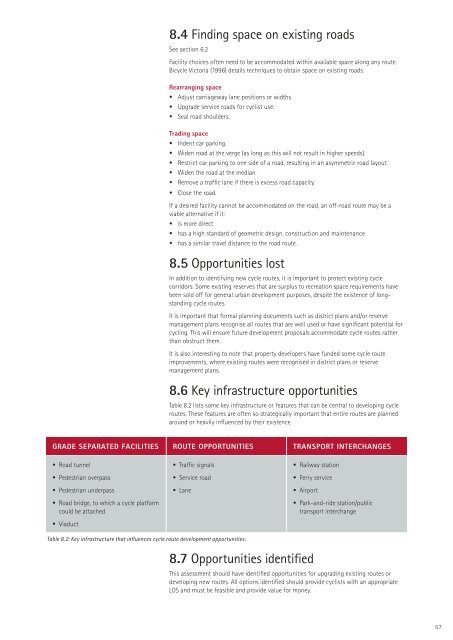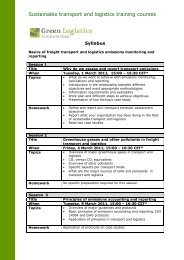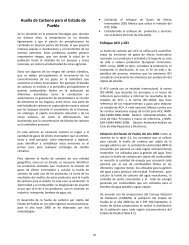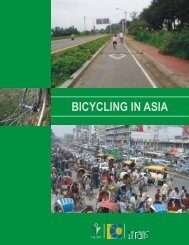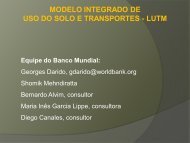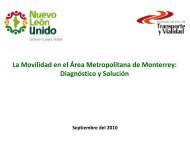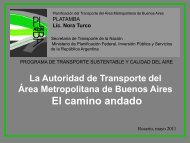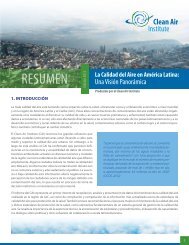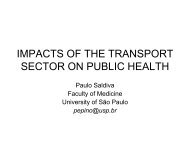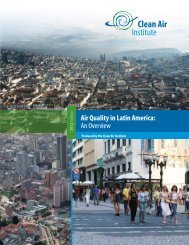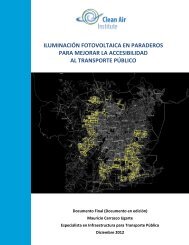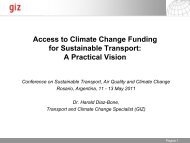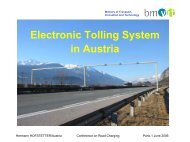CYCLE NETWORK AND ROUTE PLANNING GUIDE
CYCLE NETWORK AND ROUTE PLANNING GUIDE
CYCLE NETWORK AND ROUTE PLANNING GUIDE
You also want an ePaper? Increase the reach of your titles
YUMPU automatically turns print PDFs into web optimized ePapers that Google loves.
8.4 Finding space on existing roadsSee section 6.2Facility choices often need to be accommodated within available space along any route.Bicycle Victoria (1996) details techniques to obtain space on existing roads.Rearranging space• Adjust carriageway lane positions or widths.• Upgrade service roads for cyclist use.• Seal road shoulders.Trading space• Indent car parking.• Widen road at the verge (as long as this will not result in higher speeds).• Restrict car parking to one side of a road, resulting in an asymmetric road layout.• Widen the road at the median.• Remove a traffic lane if there is excess road capacity.• Close the road.If a desired facility cannot be accommodated on the road, an off-road route may be aviable alternative if it:• is more direct• has a high standard of geometric design, construction and maintenance• has a similar travel distance to the road route.8.5 Opportunities lostIn addition to identifying new cycle routes, it is important to protect existing cyclecorridors. Some existing reserves that are surplus to recreation space requirements havebeen sold off for general urban development purposes, despite the existence of longstandingcycle routes.It is important that formal planning documents such as district plans and/or reservemanagement plans recognise all routes that are well used or have significant potential forcycling. This will ensure future development proposals accommodate cycle routes ratherthan obstruct them.It is also interesting to note that property developers have funded some cycle routeimprovements, where existing routes were recognised in district plans or reservemanagement plans.8.6 Key infrastructure opportunitiesTable 8.2 lists some key infrastructure or features that can be central to developing cycleroutes. These features are often so strategically important that entire routes are plannedaround or heavily influenced by their existence.GRADE SEPARATED FACILITIES <strong>ROUTE</strong> OPPORTUNITIES TRANSPORT INTERCHANGES• Road tunnel• Pedestrian overpass• Pedestrian underpass• Road bridge, to which a cycle platformcould be attached• Viaduct• Traffic signals• Service road• Lane• Railway station• Ferry service• Airport• Park-and-ride station/publictransport interchangeTable 8.2: Key infrastructure that influences cycle route development opportunities.8.7 Opportunities identifiedThis assessment should have identified opportunities for upgrading existing routes ordeveloping new routes. All options identified should provide cyclists with an appropriateLOS and must be feasible and provide value for money.57


